SME Finance Policy Guide
SME Finance Policy Guide
SME Finance Policy Guide
Create successful ePaper yourself
Turn your PDF publications into a flip-book with our unique Google optimized e-Paper software.
G-20 <strong>SME</strong> FINANCE POLICY GUIDE<br />
35<br />
ers; concept of nonperforming; horizon for forecasting<br />
model;<br />
• Identification of potential variables: characterization of the<br />
credit proponent; characterization of the operation;<br />
selection of significant variables for the model; analysis<br />
of the restrictions to be considered in relation to<br />
the variables;<br />
• Planning sample and data collection: selection and dimension<br />
of the sample; collection of data; assembly of<br />
the database;<br />
• Determination of scoring formula through statistical techniques:<br />
for example, discriminant analysis or logistic regression;<br />
and<br />
• Determination of the cut-off point from which the customer is<br />
classified as delinquent or good payer: the point from which<br />
the financial institution may approve the credit.<br />
Some countries, such as India, have introduced <strong>SME</strong><br />
rating agencies and/or specialist PCBs as additional<br />
institutions designed to generate and provide more<br />
information to prospective lenders. This is a relatively<br />
recent initiative that merits consideration by other<br />
countries. There are some critical issues that need to be<br />
revisited, such as the level of independence of the ratings<br />
provider (like those observed in the case of credit<br />
rating agencies). It is also possible that these agencies<br />
require a critical size of market to break even and<br />
become profitable. If this is the case, DFIs and governments<br />
could consider regional solutions, involving<br />
regional hubs that are large enough to dilute fixed costs,<br />
but that also contain expertise at the country level.<br />
The World Bank’s International Standards on Credit<br />
Reporting (see Annex III) provide an internationally<br />
accepted framework for credit reporting systems’<br />
policy and oversight. They are intended to serve as a<br />
guide for policymakers, regulators, banking supervisors,<br />
credit reporting data providers, credit reporting<br />
service providers, the users of the services, and individuals<br />
whose data is stored in these systems. The standards<br />
are based on the development of principles,<br />
guidelines, and roles for each participant in the system<br />
Example: <strong>SME</strong> Rating Agency of India<br />
(<strong>SME</strong>RA)<br />
India’s <strong>SME</strong>RA is the country’s first rating agency focusing<br />
on the M<strong>SME</strong> sector, providing comprehensive ratings<br />
for the use of financial institutions in the assessment<br />
of credit. The government of India initiated the creation<br />
of <strong>SME</strong>RA in 2005, in coordination with other stakeholders,<br />
including 11 public and private financial institutions<br />
exposed to <strong>SME</strong>s, in order to improve credit flow<br />
to the M<strong>SME</strong> sector. Diversified equity ownership by 11<br />
banks enabled the lenders to accept <strong>SME</strong>RA’s ratings<br />
and extend both financial and non-financial benefits to<br />
well-rated <strong>SME</strong>s. <strong>SME</strong>RA ratings categorize M<strong>SME</strong>s<br />
according to size, so that each M<strong>SME</strong> is evaluated<br />
among its peers. The pricing policy aims to keep fees<br />
affordable for <strong>SME</strong>s. The rating fee does not exceed<br />
USD 1,155, for which the government provides a 75 percent<br />
rating fee subsidy. <strong>SME</strong>RA has completed over<br />
6,500 ratings. The ratings have improved access to<br />
bank financing for at least 20 percent of rated clients,<br />
and collateral requirements have decreased in 10 percent<br />
of rated cases. A rating renewal in 20 percent of<br />
cases indicates usage of ratings for monetary benefit as<br />
well as a self-improvement tool. By the end of 2011,<br />
<strong>SME</strong>RA operations are expected to generate profits of<br />
15 percent, and to have reached over 80,000 <strong>SME</strong>s.<br />
ensuring a comprehensive framework for the development<br />
of an efficient, safe, and reliable national credit<br />
reporting system.<br />
Challenges and priorities for LDCs<br />
In general, credit bureau coverage in developing<br />
regions is much lower than the average of the OECD.<br />
Credit bureau coverage in Sub-Saharan Africa and in<br />
South Asia is particularly weak. However, the existence<br />
of credit registries and bureaus seems to matter more<br />
in developing countries, suggesting a more important<br />
role for the government in promoting informationsharing<br />
in these countries. 39<br />
While the challenges faced in LDCs are often similar to<br />
those of other markets, the barriers to sharing credit<br />
39 Djankov, S., C. McLiesh, and A. Shleifer. 2007. “Private Credit in 129 Countries.” Journal of Financial Economics, May 2007, available at:<br />
http://ideas.repec.org/p/nbr/nberwo/11078.html .


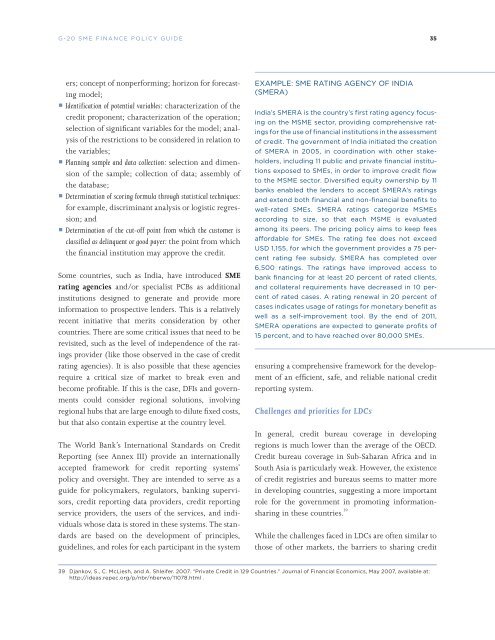
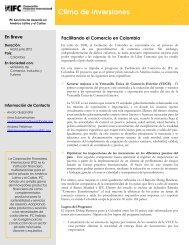
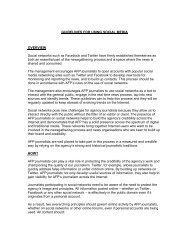
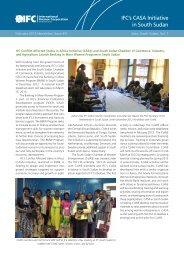

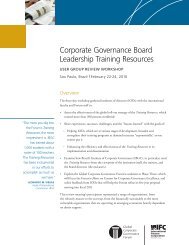




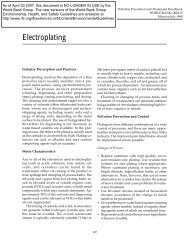

![Print a two-page fact sheet on this project [PDF] - IFC](https://img.yumpu.com/43449799/1/190x245/print-a-two-page-fact-sheet-on-this-project-pdf-ifc.jpg?quality=85)


